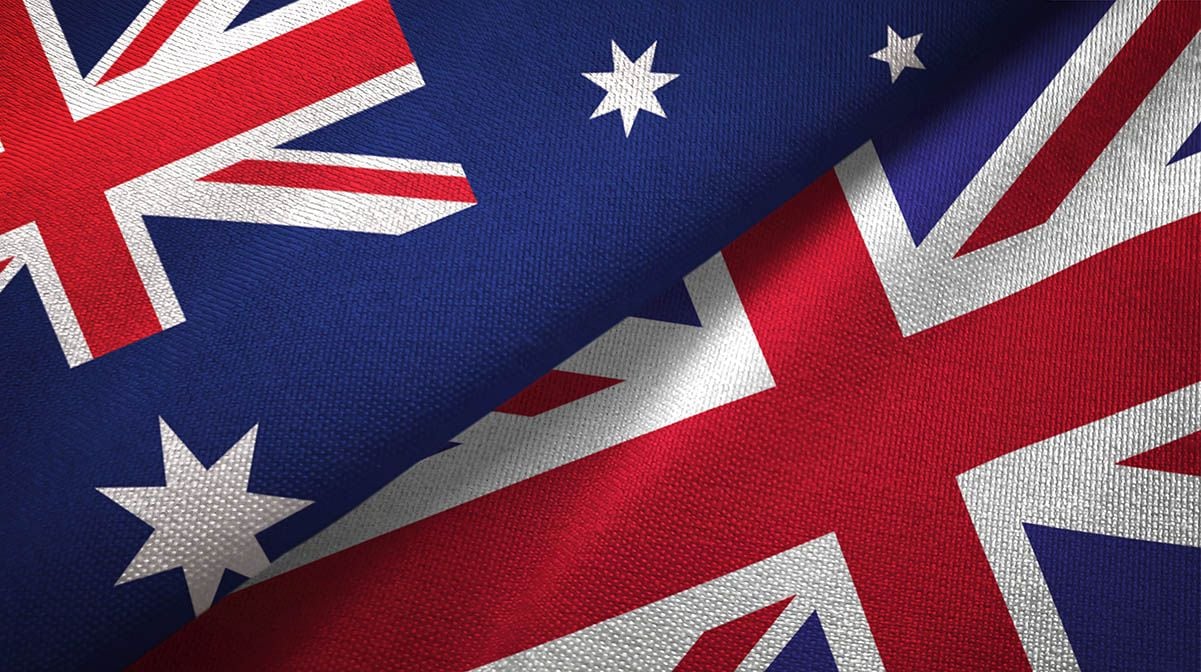Pound's Downtrend against Australian Dollar to Extend Suggest Techs
- Written by: Albert Townsend
-
- In spite of recovery GBP/AUD remains in a downtrend
- Break below 1.82 lows required to confirm continuation
- Move above Nov 3 highs would reverse the trend
- Key data release in the week ahead are New Home Sales in October

Image © Adobe Images
The Pound to Australian Dollar exchange rate is trading at around 1.8257 at the time of writing after last week snapping a run of six consecutive weeks of declines, but studies of the charts suggest the pair will probably continue falling in line with the dominant downtrend, assuming a break below last week’s lows.
The 4-hour chart shows the pair started a strong recovery after the November 2 lows.
This recovery was short-lived, however, and after price peaked on November 3 it reversed and began falling back down again.
Above: GBP/AUD at four-hour intervals.
- GBP/AUD reference rates at publication:
Spot: 1.8260 - High street bank rates (indicative band): 1.7619-1.7750
- Payment specialist rates (indicative band): 1.8094-1.8167
- Find out about specialist rates, here
- Or, set up an exchange rate alert, here
The 4hr chart is used to determine the short-term outlook, which includes the coming week or next 5 days.
Another thing to note on this chart is that the Nov 2 recovery was accompanied by a buy signal from the RSI indicator exiting the oversold zone (cricled), and this reinforces its bullishness.
We would now be looking for a break below the 1.8199 lows, therefore, for confirmation of a continuation of the downtrend.
Such a move would be forecast to probably fall to the bottom of the trend channel and Nov 2 lows at about 1.8100-1.8115.
The daily chart, which shows how the trend could play out over the medium-term, or next week to month, shows how the overall trend since August has been down, and that this dominant downtrend is likely to extend.
Above: GBP/AUD at daily intervals.
It is also possible to see from the chart how the Nov 2 recovery quickly stalled at the level of the 200-day moving average (MA) before starting to decline again.
The rebound was accompanied by a signal from the RSI indicator in the bottom panel (circled), suggesting underlying strength behind the recovery despite its inability to break above the 200-day.
Whilst a continuation of the broad down-trend is favoured - to a target at 1.8100 - it is also possible the pair may be reversing trend and a break above the Nov 3 highs at 1.8425 would negate the bearish bias and signal a likely stronger recovery in the exchange rate.
The weekly chart - used to give an idea of the longer-term outlook, which includes the next few months - is showing a more bearish picture for the pair.
The pair formed an indecisive doji Japanese candlestick pattern last week and remains below the two major moving averages of the 50 and 200-week MAs.
Above: GBP/AUD at weekly intervals.
Secure a retail exchange rate that is between 3-5% stronger than offered by leading banks, learn more.
An eventual continuation lower is favoured, therefore, to a possible target at 1.7850 and the major trendline drawn from the October 2016 lows.
The Australian Dollar: What to Watch
The key data release for the Aussie Dollar in the week ahead, are New Home Sales figures from the Housing Industry Association (HIA) for the month of October, released on Tuesday, November 9.
In the previous month of September, New Home Sales rose by 2.3% month-over-month, amid a lift in consumer confidence following an end of COVID-19 lockdowns.
Home sales have remained resilient since the end of March and are stronger compared to 2018 and 2019, which are the best years for comparison as they pre-date both the pandemic and the Homebuilder - a national housing stimulus scheme.
According to HIA economist Tom Devitt, the boost in home building will flow through to H2 2022.
If sales do not show a rise, the release may weigh on the Australian Dollar given the optimistic outlook.







